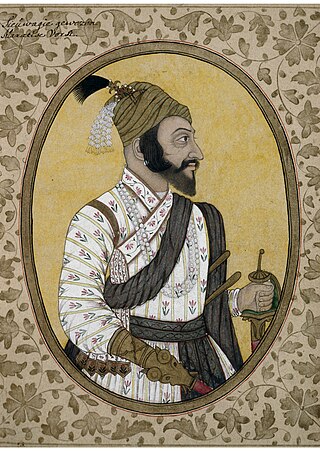
Shivaji I was an Indian ruler and a member of the Bhonsle Dynasty. Shivaji carved out his own independent kingdom from the declining Adilshahi Sultanate of Bijapur that formed the genesis of the Maratha Empire. In 1674, he was formally crowned the Chhatrapati of his realm at Raigad Fort.

Baji Prabhu Deshpande was a general of the Maratha Army. He is known for his role in the Battle of Pavan Khind at Ghod Khind, where he sacrificed his life defending Shivaji from incoming Adil Shahi forces of Siddi Johar. He also was a landlord or Vatandar in the Maval region.

Shahaji Bhosale was a 17th century Indian military leader who served the Ahmadnagar Sultanate, the Bijapur Sultanate, and the Mughal Empire at various points in his career. As a member of the Bhonsle dynasty, Shahaji inherited the Pune and Supe jagirs (fiefs) from his father Maloji, who previously served the Ahmadnagar Sultanate. During the Mughal invasion of the Deccan, Shahaji joined the Mughal forces and served under Emperor Shah Jahan for a short period. After being deprived of his jagirs, he defected to the Bijapur Sultanate in 1632 and regained control over Pune and Supe. In 1638, he received the jagir of Bangalore after Bijapur's invasion of Kempe Gowda III's territories. Afterwards, he became the chief general of Bijapur and oversaw its expansion.

Afzal Khan was a general who served the Adil Shahi dynasty of Bijapur Sultanate in India. He played an important role in the southern expansion of the Bijapur Sultanate by subjugating the Nayaka chiefs who had taken control of the former Vijayanagara territory.

The Deccan wars were a series of military conflicts between the Mughal Empire and the descendants of the Maratha ruler Shivaji from the time of Shivaji's death in 1680 until the death of Emperor Aurangzeb in 1707. Shivaji was a central figure in what has been called "the Maratha insurgency" against the Mughal state. Both he and his son, Sambhaji, or Shambuji, typically, alternated between rebellion against the Mughal state and service to the Mughal sovereign in an official capacity. It was common practice in late 17th-century India for members of a ruling family of a small principality to both collaborate with the Mughals and rebel.

The Battle of Pratapgad took place on 10 November 1659, at Pratapgarh Fort in Satara. The battle was fought between the Maratha forces led by Chhatrapati Shivaji and the Bijapur troops under General Afzal Khan. The Marathas emerged victorious, marking their first significant military triumph against a major regional power. In the aftermath of this victory Shivaji captured 65 elephants, 4000 horses, 1200 camels and 10 Lakh rupees of cash and jewelry.
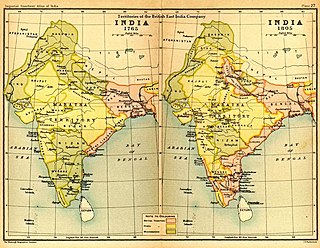
The Maratha Conquests were a series of conquests in the Indian subcontinent which led to the building of the Maratha Empire. These conquests were started by Shivaji in 1659, from the victory at the Battle of Pratapgad against Bijapur. The expansion of the empire was limited and interrupted by the Mughal conquests of south India by Mughal ruler Aurangzeb until he eventually died in 1707 in Deccan itself. Marathas were forced to defend their territories against the overwhelmingly strong Mughal army in the 27 years long Deccan wars. They were able to defend their territories and gain an upper hand over Mughals in the sustained conflict.

Battle of Surat, also known as the Sack of Surat, was a land battle that took place on 5 January 1664, near the city of Surat, in present-day Gujarat, India, between Shivaji, leader of the fledgling Maratha Confederacy and Inayat Khan, a Mughal commander. The Marathas defeated the Mughal military unit posted at Surat and ransacked the city.

The Battle of Sinhagad, also known as Battle of Kondhana, involved an attack by the forces of the Maratha Empire during the night of 4 February 1670 on the fort of Sinhagad, near the city of Pune, Maharashtra. The Marathas captured the fort.

Panhala fort, is located in Panhala, 20 kilometres northwest of Kolhapur in Maharashtra, India. It is strategically located looking over a pass in the Sahyadri mountain range which was a major trade route from Bijapur in the interior of Maharashtra to the coastal areas. Due to its strategic location, it was the centre of several skirmishes in the Deccan involving the Marathas, the Mughals and the British the grand son's of chhatrapati shivaji maharaj East India Company, the most notable being the Battle of Pavan Khind. Here, the queen regent of Kolhapur, Tarabai Ranisaheb, spent her formative years. Several parts of the fort and the structures within are still intact. It is also called as the 'Fort of Snakes' as it is zigzagged in shape.
Rustam Zaman was the title of a Bijapuri general who commanded Adil Shah's 10,000 strong army, in the Battle of Kolhapur against Shivaji's forces. He also was the son of Ranadulla Khan, an experienced and senior general of Bijapur and the chief mentor and guardian of Shahaji.

The siege of Bijapur began in March 1685 and ended in September 1686 with a Mughal victory. The siege began when Aurangzeb dispatched his son, Muhammad Azam Shah, with a force of nearly 50,000 men to capture Bijapur Fort and defeat Sikandar Adil Shah, the then ruler of Bijapur, who refused to be a vassal of the Mughal Empire. The siege of Bijapur was among the longest military engagements of the Mughals, lasting more than 15 months until Aurangzeb personally arrived to organize a victory.
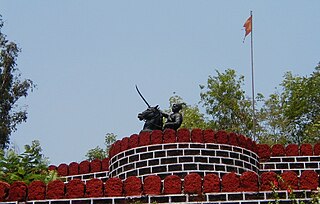
The Ponda Fort is located near Ponda, in the state of Goa on the west coast of India. The present structure is a modern reconstruction on this location and converted into a park. In 2017 the lower walls of the fort had collapsed, due to neglect and also due to the use of poor quality materials during a previous (1977) renovation. The original structure was constructed of stone and mud, and left bare, the new structure contains stone, concrete and is plastered and painted red.
The Battle of Bhatvadi was fought in 1624, near modern Bhatodi Pargaon village in Maharashtra, India. The Ahmadnagar army led by Malik Ambar defeated a combined Mughal-Bijapur force led by the Bijapuri general Mullah Muhammad Lari.

The Maratha–Portuguese War of 1683–1684 refers to the Mahratta invasion of the Portuguese-controlled portions of Goa and also the Bombay area of the North Konkan. The conflict between the Mahratta Confederacy and the Portuguese in Goa and Bombay, continued on various fronts in between 1683–1684.

Shivaji's Southern campaigns are also defined as Maratha invasion of Karnataka and Dakshina Digvijaya campaigns. Following his coronation as sovereign ruler, Shivaji faced a tumultuous period marked by the loss of his trusted advisor and mother, Jijabai, and escalating conflicts with neighboring powers.
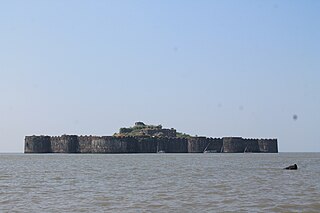
The Siege of Janjira was a military campaign undertaken by the Maratha Empire, commanded by Sambhaji, the second Maratha ruler, against the Siddis of Janjira in January 1682. The Maratha forces, led by Sambhaji, withdrew from Janjira to the Konkan region in response to Mughal attacks, leaving a contingent behind under the command of Dadaji Raghunath Deshpande. Despite their efforts, the Marathas were unable to capture the fort, and the Siddis pursued the retreating forces, plundering Maratha territories.

The Siege of Panhala was led by Siddi Jauhar on behalf of the Bijapur Sultanate, dispatched by Ali Adil Shah II to reclaim the Panhala Fort, was a momentous undertaking. Shivaji had seized Panhala on 28 November 1659, just 18 days after the death of Afzal Khan at Pratapgad. Despite the efforts of two of Bijapur Sultanate’s prominent commanders, Afzal Khan and Rustam Zaman, who had both failed in their attempts to capture Shivaji, victory eluded them. With Bijapur running short of options and facing the expanding influence of Shivaji, the responsibility of bringing this campaign to a conclusion fell on Siddi Jauhar. By taking on this pivotal role, Siddi Jauhar finally earned favor at the Bijapur court, leading to the restoration of the Kurnool district to him, and Shivaji had to surrender the Panhala fort.

The Shivaji's invasions of Janjira were a series of military campaigns launched by the first Maratha ruler, Shivaji, against the Abyssinian rulers of the sea fortress of Janjira named Siddis between 1661 and 1676. The Marathas attacked the Janjira fort annually, and during the final siege of 1676, the Maratha Peshwa Moropant faced a counterattack by the Siddis, forcing the Marathas to retreat with heavy casualties.
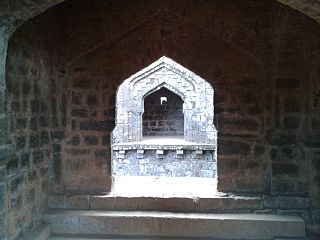
When Adil Shah of Bijapur died (1672) Shivaji sent Annaji Datto along with Kandoji in a fresh assualt against Sikandar Adil Shah and Regent Khawas Khan. They advance at Panhala mounted the wall at night time killing the commander and securing the fortress.
















